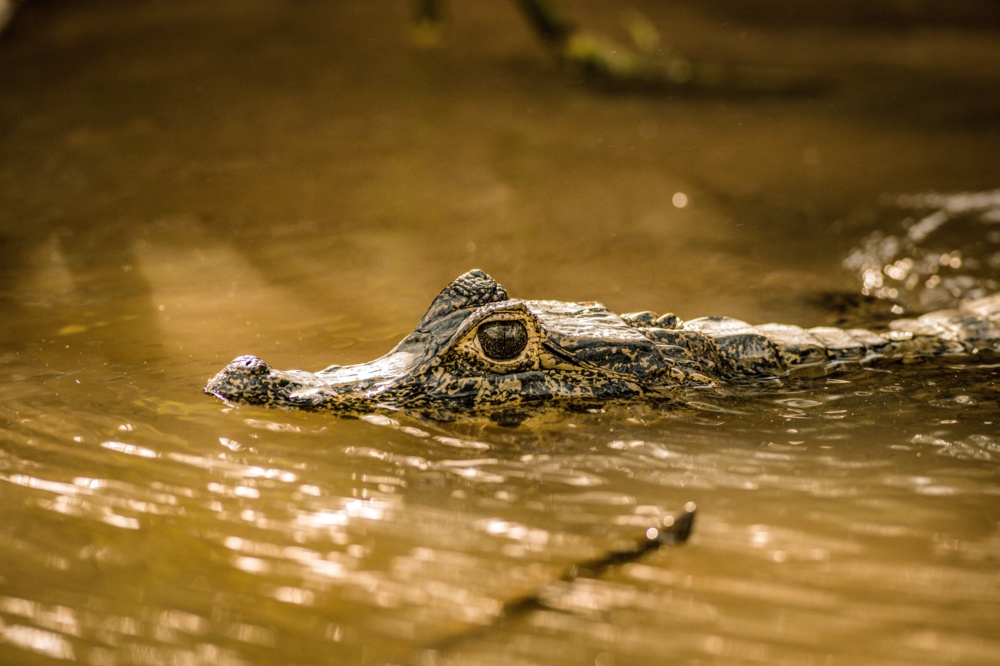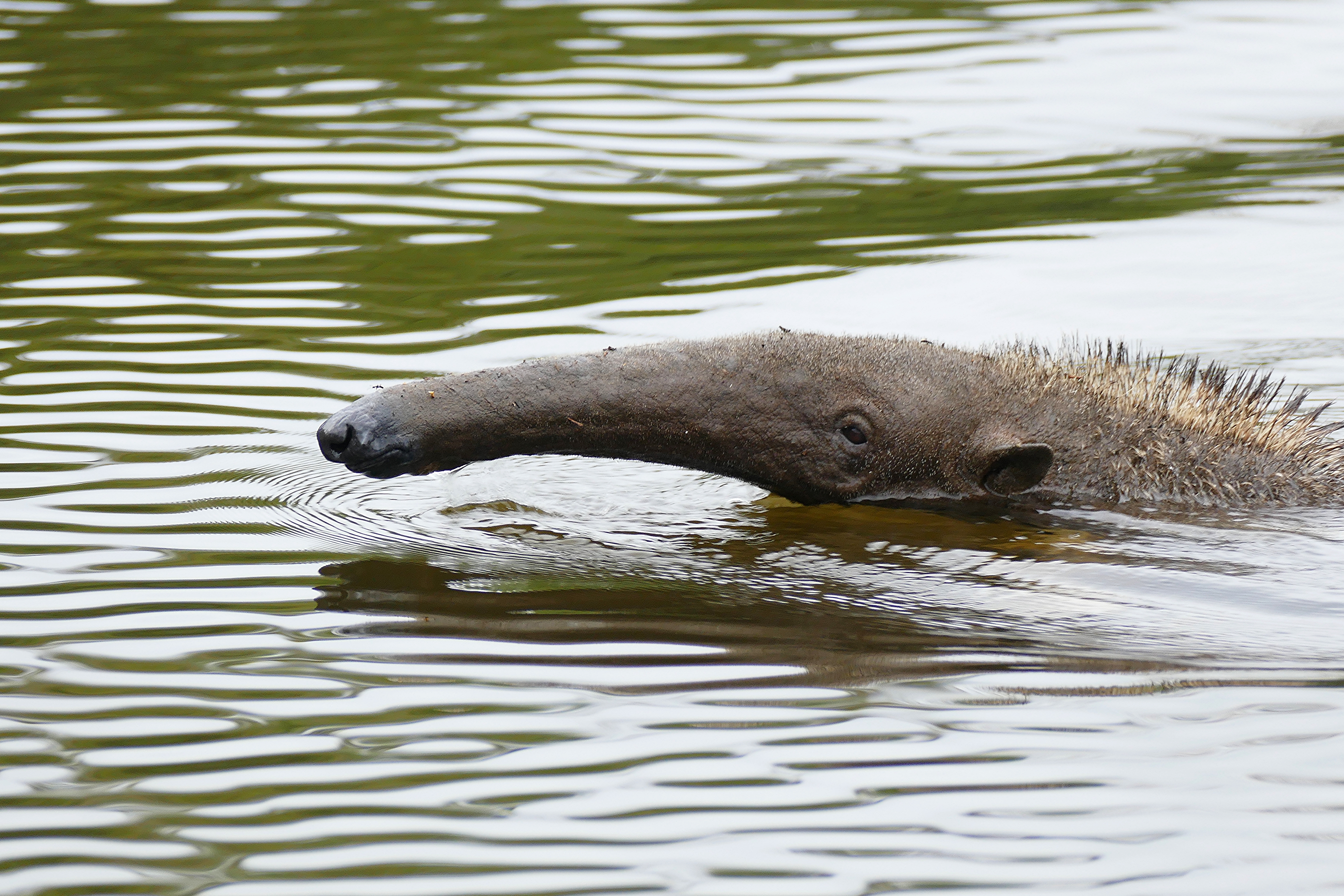
A wetland under siege: is the Pantanal a paradise lost?
The Pantanal - the largest wetland on Earth and home to an astounding array of wildlife - is dying a death of a thousand cuts from deforestation, destructive agriculture and the climate crisis. This World Wetlands Day we must recognise that if we allow it to disappear on our watch, we will be overseeing an international tragedy.
A wetland starved for water
For now, the Pantanal still teems with wildlife. Spanning Brazil, Bolivia and Paraguay, it is home to the world’s largest flying parrot, the hyacinth macaw, the genetically unique maned wolf, the green anaconda, a snake so large it feeds on deer, and it has the highest density of jaguars in the world.
Torrential rainfall each year creates a landscape of flooded grasslands fed by a lattice of waterways which give way to vast savannas and thick ‘gallery forests’ as the waters recede. Its waterlogged soils are a vital carbon store, helping to regulate the global climate, and it provides food, water and income for more than 1.2 million people.
This is an ecosystem which lives and dies by the ebb and flow of water. It depends on the transience of its floods, submerging and revealing the landscape and providing unique habitats that allow wildlife to thrive. But Brazilian Pantanal has lost 74% of its surface water since 1990. Syphoned off for agricultural irrigation and lost to the rising temperatures and wildfires of the climate crisis, the Pantanal is a wetland starved of water.
The rivers supplying water to the wetland’s giant basin have been increasingly tamed to irrigate crops and generate hydroelectricity. Many of the dams are small, but with 57 hydropower plants in this region in 2020, and 88 more planned, together they are changing the behaviour of the flood pulse. While renewable energy is crucial to our future, it must be carefully planned so that it does not come at the expense of communities and wildlife.
This cycle of flooding has also kept agriculture at bay - farming land that is periodically submerged is not usually a good investment. But as the Pantanal gets drier and the flood pulse less extreme, big agriculture is taking an interest.
Brazil is the largest soy producer in the world, and while the Pantanal has not yet succumbed, 60% of the highlands to the north of the wetland have been taken over, largely by intensive soy production. The rivers that flow through these highland farms - collecting agrochemical residue and waste - wash straight down into the Pantanal, slowly turning the wetland into a vast and toxic reservoir.
Despite growing international awareness of the importance of protecting such vital ecosystems, President Bolsonaro’s far-right government has destroyed much of the environmental progress made by the country over the last decade, allowing the agriculture and timber industries to take advantage of its anti-conservation agenda.
The menace of 'megafarms'
As well as the damage caused by encroaching soy cultivation, 15% of the Pantanal has been cleared for cattle, and if the current rate of deforestation persists, the ecosystem will effectively disappear by 2050.
With almost 4 million cattle in the Brazilian Pantanal alone, ranching is the main source of income in the region. While traditional cattle ranching techniques are generally viewed as sustainable, the intensive beef production of Brazil’s growing megafarms is a very different story. Clearing huge areas of vegetation, planting non-native pasture grasses and using polluting agrochemicals, these goliaths pose an existential threat to the communities and wildlife of the Pantanal.
In total, 93% of the Brazilian Pantanal is held in private lands, of which 80% is used for cattle ranching. No ecosystem could survive this level exploitation.
These same cattle ranchers and farmers are allegedly responsible for starting the majority of the wildfires that reduced nearly 30% of the Pantanal to ash in 2020. Over 17 million animals are estimated to have perished in these fires, and every Indigenous territory in the Pantanal was damaged, threatening communities’ identity, knowledge and culture.
We must act now
The Brazilian government must prioritise the protection of unique ecosystems like the Pantanal, and internationally we must recognise the part we are playing in driving its demise. EU imports of beef and leather have been linked to the destruction of the Pantanal.
The Indigenous peoples of the Pantanal will tell you: once there were too many jaguars to count here, but now, as the wildfires and sprawling agriculture close in, they recognise every one as an individual. Each has a name. Soon, even these last big cats will be gone if we do not roll-back the devastation of this unique natural wilderness.
Eliane Xunakalo, from the Kura-Bakairi people, has not lost hope: “This is my message from an Indigenous woman. I want to see my grandchildren in the river, I want to see the Pantanal beautiful just the way I pictured it. To politicians I say this: Protect our forests. Protect our biomes. […] You need to use it in a sustainable way, because otherwise there will be no more planet. There will be no water, there will be no animals and there will be no forest. You need to hear us.”
At the UN’s COP15 biodiversity conference this year, our leaders must put in place ambitious policy to stop and reverse the catastrophic loss of nature worldwide.
We need to end the crisis of wildlife extinction and climate breakdown, reinvigorating and reinventing our relationship with a thriving natural world. As the Indigenous peoples of the Pantanal say, as they watch their local jaguar populations dwindle, there is still much left to save, but we must act now.
This story was originally published by Fair Planet and is reposted here with permission.
SIGN UP FOR OUR EMAILS AND STAY UP TO DATE WITH EJF

